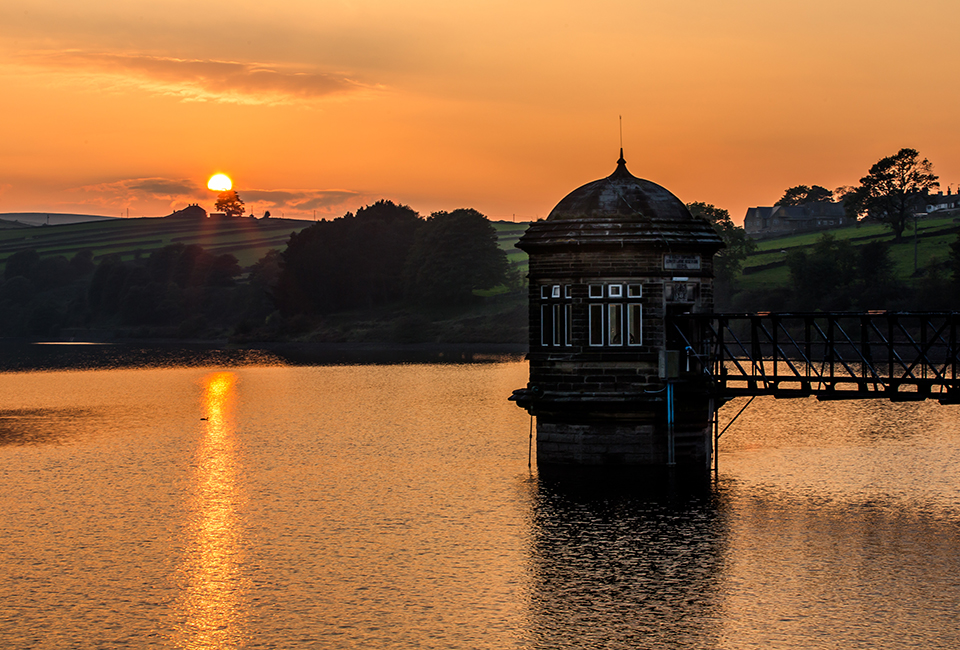At Yorkshire Water, we have over 100 reservoirs that are free to access and enjoy. And we encourage everyone to get outdoors experience them as often as possible. But to make sure this never has to change, we need people to act safely and responsibly.
Here you will learn about the dangers of water and the rules that are in place to keep you safe.
You will also find advice on what to do in an emergency, with tips that might one day help to save somebody’s life.
Let’s jump right in – the water safety section, that is.
What are the biggest drowning risks?
When the weather starts warming up, the temptation to take a dip in your local reservoir to cool down is real. But don’t be fooled, swimming in reservoir waters can be a very dangerous activity.
These are the biggest drowning risks you need to be aware of.
Strong Currents
Reservoirs and quarry lakes can have strong underwater currents caused by pipes and active pumping machinery that you can’t see. The water may look calm from the outside, but under the surface, it can be a very different story.
Cold
Reservoirs are very deep, and the water doesn’t flow like it does in rivers or the sea so the temperatures are above an icy cold 12 C. Cold enough to take your breath away. Literally. Even if the water doesn’t feel too cold, don’t take the risk.
Time
Or lack of it. If you or a friend is drowning and somebody calls 999, the time it takes to arrive at the reservoir means it could already be too late. Without specialist equipment, you could put yourself at even more risk trying to help.
Algae
That green looking layer on the water is a bacterial organism known as blue-green algae, and it can produce toxins known to kill animals and pets. In humans, it can cause severe illnesses and skin irritation.
Debris
From weeds and plants that can entangle you underwater to scrap metal, bottles, cans, and broken glass, you never know what hazards could be waiting below the waters’ surface. Make sure you and your friends don’t find out the hard way.
The dangers of cold water
Jumping into cold water is dangerous enough without considering all the other hazards that might be in the reservoir. In fact, we know that cold water often plays a significant part in fatalities that occur in open water.
We teamed up with West Yorkshire Fire and Rescue to demonstrate how dangerous open water can be.
Why does cold water take your breath away?
It’s called the cold shock response. When the cold receptors in your skin are all shocked into action at the same time they cause an involuntary gasp of air.
This is your body’s natural defence mechanism kicking in, and it could kill you long before hypothermia does. That first gasp of air could fill your lungs with water, drowning you instantly.
If you survive the initial shock, one of the first signs of trouble is hyperventilation (rapid breathing) as your body tries to increase the flow of oxygen into the blood in an attempt to stay warm.
If you’re still in the water after 15 minutes or so, your body will begin to shut down to protect vital organs.
Your muscles will cramp up and make it impossible to swim to safety, and eventually, you will become exhausted. If help doesn’t arrive within seconds, it could be too late.
What to do in an emergency
If you do end up in an emergency situation, it’s important that you know what to do. Just knowing a few simple tips could save someone’s life, or even your own.
If you fall in the water
Don’t thrash your arms and legs around. This panic reaction is the worst thing you can do as it puts an increased strain on your heart and increases the chance of water entering your lungs. It also releases any potentially lifesaving buoyancy trapped in your clothes.
Instead, float on your back for 60 to 90 seconds to get your breathing back under control. You’re then in a position to signal for help or attempt to swim to safety. You can practice floating in your local pool.
If you notice someone else in the water
Resist the urge to jump in and rescue them. A drowning person is panicking and could easily force you under the water with them. Instead, shout for help and dial 999 if you have a mobile phone.
Shout words of encouragement to the casualty and try to reach them with a rope, a pole, a tree branch or anything you can try.
You can also throw something to help them stay afloat like a plastic container or life belt.
This will give the firefighters, police, and paramedics more time to reach the scene with more specialist equipment to bring the victim to safety.
Reservoir safety advice
Not only applicable to reservoir water, follow this safety advice when visiting any body of water. Whether it's a river, pond, lake, or the seaside.
- Be aware of your surroundings and take notice of any warning signs when out and about.
- Stay well clear of the water’s edge. They are often unstable and cause you to fall into the water.
- When visiting a reservoir, always go with a friend.
- Always let someone know where you’re going.
- Keep a mobile phone with you at all times.
- Learn swimming and lifesaving skills at your local pool.
Following everything you’ve learnt in this section about water safety, Yorkshire’s reservoirs can make for some incredible day’s out.
To find the nearest reservoir to you, visit our reservoirs page and enter your postcode to learn more.

